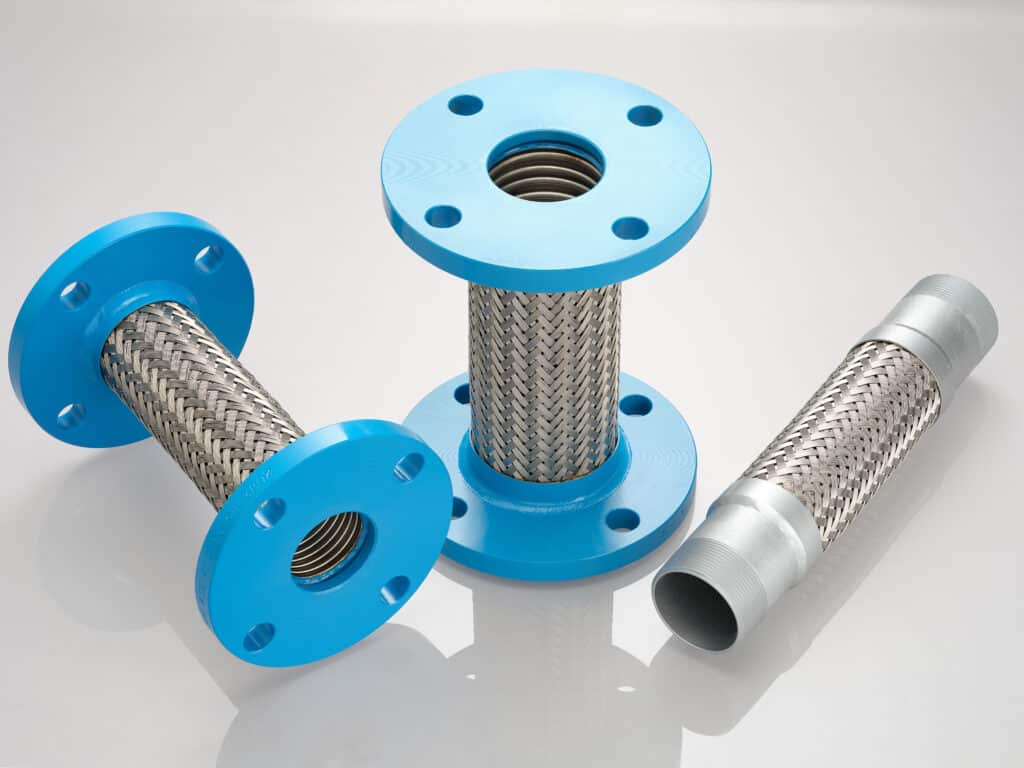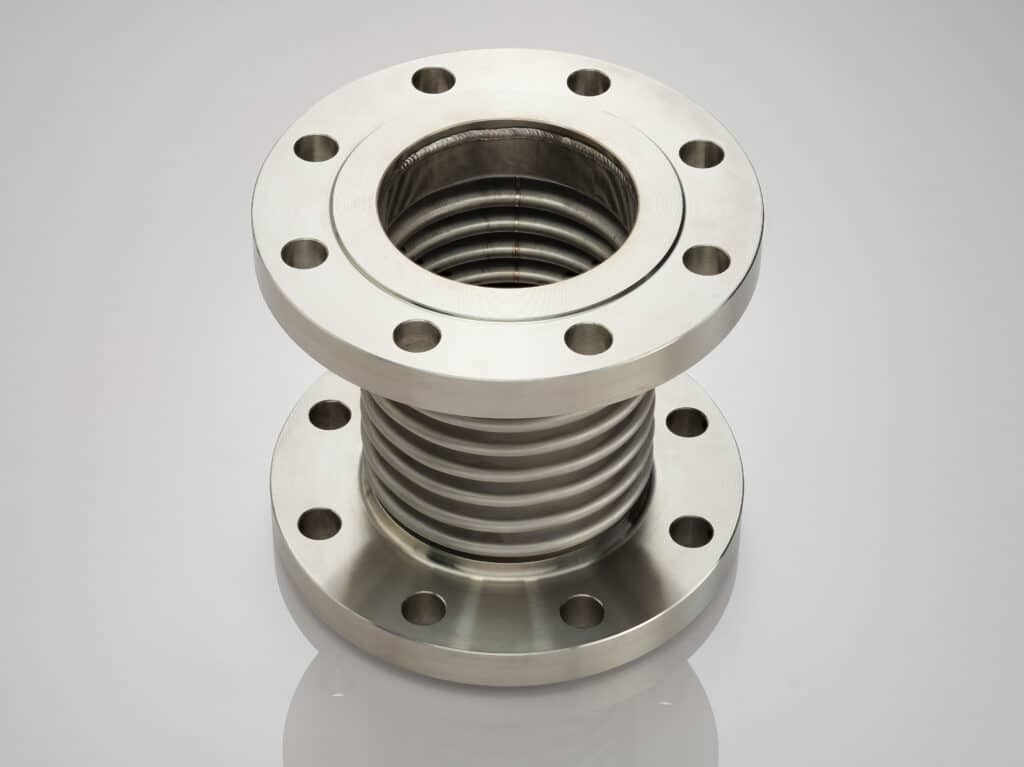Pump Connector Basics: 5 Things Every Hose Sales Rep Should Know
If you are selling metal hose and not selling pump connectors, this bulletin is for you. Here is a specific type of flex connector used by many of the accounts you already service. It is an easy add-on–especially since there are standard configurations, meaning pump connectors are often in stock and do not typically require a custom quote.
To introduce you to the basics, here are answers to the most common questions we field about these flexible components.

What is a pump connector?
Pump connectors are short metal hose assemblies. We use a specific term to describe this subset of products because, unlike most metal hose assemblies which are built to order and come in countless configurations, there are a standard set of pump connector designs.
Given similarities across HVAC systems, pump connectors are built to inventory. Off-the-shelf options generally fall into two categories: those with flanged ends and those with male NPT ends.
Standardization is driven by the HVAC industry where these flexible components are most often used. To ensure safe and efficient operation, industry groups and regulatory bodies publish detailed standards and guidelines for HVAC piping systems. Among the most prominent is ASHRAE, the American Society of Heating, Refrigerating and Air-Conditioning Engineers.
Why use a pump connector?
Pump connectors protect piping systems by absorbing movement, correcting slight misalignment, and damping vibration, a feature that especially benefits the people living or working nearby. Not surprisingly, noise reduction is a common topic of conversation with pumps and compressors.
Movement is caused by thermal expansion and contraction, changes in flow velocity, or vibration, and can be compounded by the settling of support foundations over time. Designed to move laterally, the degree to which a pump connector can flex depends on the length of the component. The longer the assembly, the greater the potential for lateral deflection.
Pump connectors are not designed to move axially–that’s a job for an expansion joint. While metal hoses can absorb axial movement if installed in a traveling loop configuration, space constraints in pump systems typically make this an unrealistic option.
Finally, as flexible components, pump connectors damp vibration. However, if noise reduction is the primary objective, a rubber connector may be the better choice. Still, there are temperature and pressure conditions where only metal pump connectors will work, and application requirements should always guide material selection.
Where are pump connectors used?
Pump connectors are used across a wide range of industrial pump systems, from water treatment plants to chemical processing facilities to food and beverage operations—anywhere pumps and compressors generate movement that could threaten surrounding pipes and equipment.
Of all these industries, HVAC remains the largest market for pump connectors. The circulation of water or refrigerants requires powerful pumps and compressors– and pump connectors help extend service life of connected equipment by absorbing movements.

Are pump connectors and expansion joints the same thing?

No, a pump connector is not an expansion joint. It is a short metal hose assembly. This is an important distinction. Expansion joints and metal hoses are not designed to accommodate the same kinds of movement. For instance, an expansion joint can accommodate axial movement, while a metal hose cannot. Metal pump connectors primarily absorb lateral movements.
Confusion sometimes arises because pump connectors are short like expansion joints. They can also both be used in pump systems. And because there is some overlapping industry jargon! There are manufacturers that label certain expansion joints as “bellows pump connectors” or “bellows-style pump connectors” but without braid, typically featuring tie rods and capable of accommodating axial movement, we would consider these products to be expansion joints.
Which pump connectors does Penflex stock?
Penflex stocks flanged and threaded pump connectors in a range of standard configurations at our Pennsylvania factory and Houston warehouse for quick shipping or pick-up.
All pump connectors are made using 321 stainless steel hose with 304L stainless steel braid. Flanged pump connectors feature #150 carbon steel plate flanges and come in sizes 2” – 12.” Threaded pump connectors feature schedule 40 carbon steel, 304 or 316 male NPT ends and come in sizes ¼” – 4”.
If your application requires a configuration not listed among our stock pump connectors, reach out to one of our engineers for a custom assembly quote.
